Weekly Current Affairs (8th to 14th May 2025) | General Test Preparation for CUET UG - CUET Commerce PDF Download
Article 51 of the UN Charter
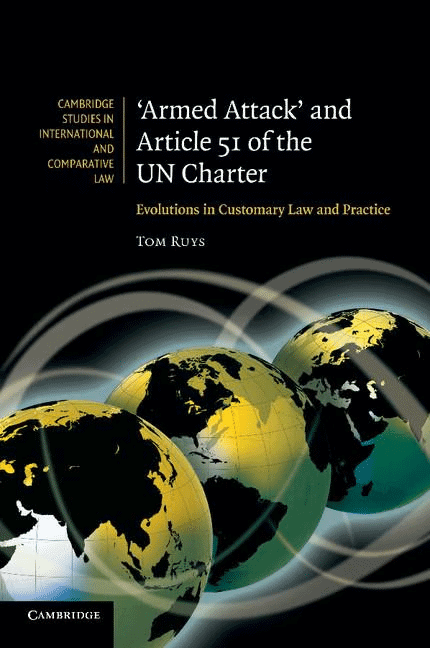 Why in News?
Why in News?
- On May 8, 2025, Article 51 of the United Nations Charter gained attention due to its implications on the right to self-defence for member states. This provision is significant in international relations and conflict resolution, particularly highlighted by Pakistan's recent invocation of it in response to military actions.
Key Takeaways
- Article 51 allows member states to defend themselves against armed attacks until the Security Council intervenes.
- The UN Charter, signed in 1945, serves as the foundational legal document for the United Nations.
- The Charter has been amended three times, reflecting evolving international norms.
Additional Details
- Article 51: This article acknowledges the inherent right of states to protect themselves from aggression. It emphasizes the importance of maintaining national sovereignty and ensuring collective security.
- The requirement for states to report actions taken under self-defence to the Security Council aims to prevent misuse of this right.
- In state-to-state conflicts, Article 51 allows a military response if one country attacks another, provided the response is proportional and necessary.
- Controversially, states often cite Article 51 in counterterrorism efforts against non-state actors, sparking debates over the legitimacy of such actions.
- India's military operations, like Operation Sindoor, illustrate the complexities of self-defence claims, with Pakistan arguing these actions violate international norms.
- The Security Council plays a crucial role in monitoring actions taken under Article 51, ensuring that states do not act unilaterally in ways that might escalate conflicts.
In conclusion, Article 51 of the UN Charter is a vital provision that balances the right of self-defence with the need for international oversight, especially in the context of ongoing geopolitical tensions.
Hydroelectric Projects on Chenab River
 Why in News?
Why in News?
- India is accelerating the development of four hydroelectric projects on the Chenab River and its tributaries. This initiative has emerged in response to heightened tensions with Pakistan, particularly following a terrorist incident in Pahalgam. The projects, namely Pakal Dul, Ratle, Kiru, and Kwar, are situated in the Kishtwar district of Jammu and Kashmir.
Key Takeaways
- The Chenab River has significant hydroelectric potential, estimated at 3,600 MW.
- Pakal Dul is the largest project, with a capacity of 1,000 MW and the first water storage facility in the region.
- The Indus Waters Treaty with Pakistan is currently under review, affecting water resource management.
Additional Details
- Chenab River: Originating from Himachal Pradesh, it has a constant high water discharge and is well-suited for hydroelectric power generation due to its steep gradient.
- Major Tributaries: Key tributaries include Thirot, Sohal, and Bhut Nallah up to Kishtwar, contributing to the river's flow.
- Project Timelines: Pakal Dul and Kiru are expected to start operations by September 2026, while Kwar and Ratle will be completed by late 2027 and 2028, respectively.
- Environmental Impact: The projects could alter water flow dynamics, raising concerns for Pakistan regarding water access and affecting local ecosystems.
The development of these hydroelectric projects is crucial for enhancing India's energy security, especially in light of geopolitical tensions in the region. The strategic implementation of Pakal Dul and its associated technologies will enable better water resource management during periods of scarcity.
Indo-Pacific Logistics Network Initiative
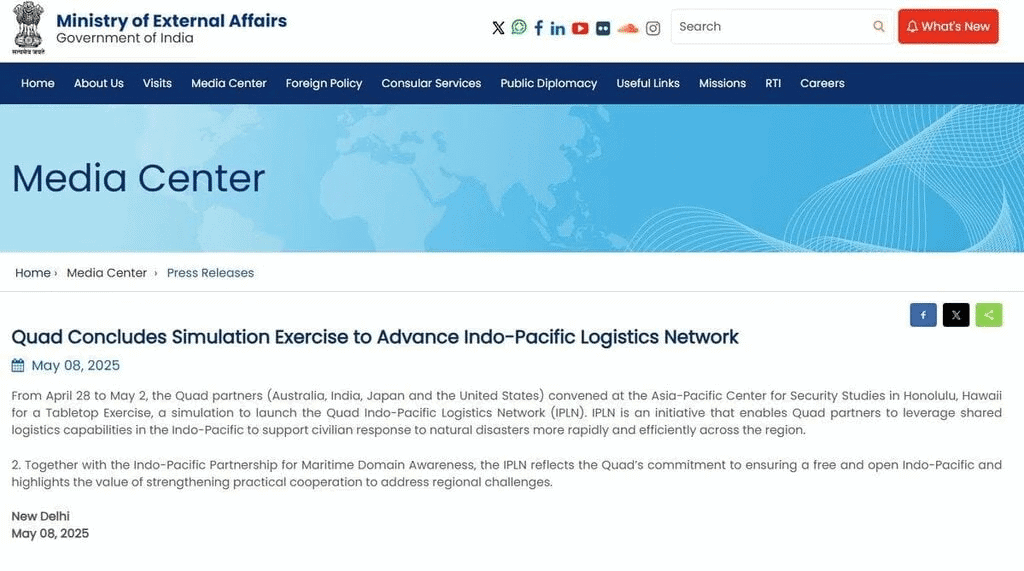 Why in News?
Why in News?
The Quad partners—Australia, Japan, and the United States—recently conducted a Tabletop Exercise in Honolulu, Hawaii, to simulate the launch of the Indo-Pacific Logistics Network (IPLN). This initiative is crucial for enhancing civilian disaster response capabilities across the Indo-Pacific region.
Key Takeaways
- The IPLN aims to improve coordination for civilian disaster responses.
- Participating countries include India, the United States, Japan, and Australia.
- The Tabletop Exercise took place from April 28 to May 2, 2025.
- The initiative enhances supply chain responsiveness for humanitarian missions.
Additional Details
- Indo-Pacific Logistics Network (IPLN): A multilateral initiative aimed at creating a shared logistics framework for better coordination in disaster response. It focuses on faster deployment of humanitarian aid through shared infrastructure.
- The IPLN enhances interoperability among Quad nations and encourages the use of technology, including digital logistics mapping and real-time tracking systems.
- Strategic Importance: The IPLN strengthens regional disaster resilience and reinforces the Quad’s commitment to humanitarian values, complementing initiatives like the One Health approach.
- The Quad's collaborative efforts date back to its formation post the 2004 Indian Ocean tsunami and have evolved into a robust platform for humanitarian assistance.
The Indo-Pacific Logistics Network represents a significant step forward in enhancing disaster response capabilities among Quad nations, showcasing their commitment to humanitarian assistance and regional stability.
INS Arnala Delivered to the Indian Navy
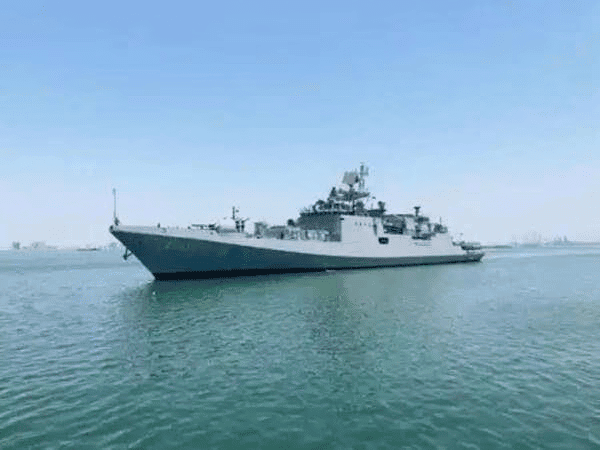 Why in News?
Why in News?
- The delivery of the new Anti-Submarine Warfare (ASW) Shallow Water Craft, INS Arnala, to the Indian Navy represents a significant enhancement in India's coastal defence capabilities against submarine threats. This vessel is part of a contract initiated in April 2019 for the construction of eight such crafts.
Key Takeaways
- INS Arnala is 77.6 metres long and 10.5 metres wide.
- It is designed for comprehensive sub-surface surveillance and anti-submarine operations, capable of coordinating with aircraft.
- The vessel was built under a Public-Private Partnership (PPP) model, in collaboration with L&T Kattupalli in Tamil Nadu.
Additional Details
- Strategic Importance: Named after the historic Arnala island, this craft reflects India's commitment to maritime security and is linked to Maratha king Chhatrapati Shivaji Maharaj. The ASW crafts will replace older Abhay class ships, thereby strengthening India's coastal defence.
- Technical Specifications: The ASW shallow water crafts have a displacement of 900 tons, a maximum speed of 25 knots, and an operational endurance of 1,800 nautical miles, making them effective for patrolling and surveillance in littoral waters.
- Indigenous Content: Over 80% of the craft's components are sourced locally, promoting self-reliance in defence production and expected to create job opportunities and enhance technical expertise in India.
- Future Developments: GRSE is in the process of constructing 16 additional warships, including advanced stealth frigates and offshore patrol vessels, demonstrating India's commitment to modernising its naval capabilities.
In conclusion, the delivery of INS Arnala marks a pivotal moment for the Indian Navy, reinforcing its operational capabilities and commitment to maritime security in the region.
New Subtype of Maturity-Onset Diabetes
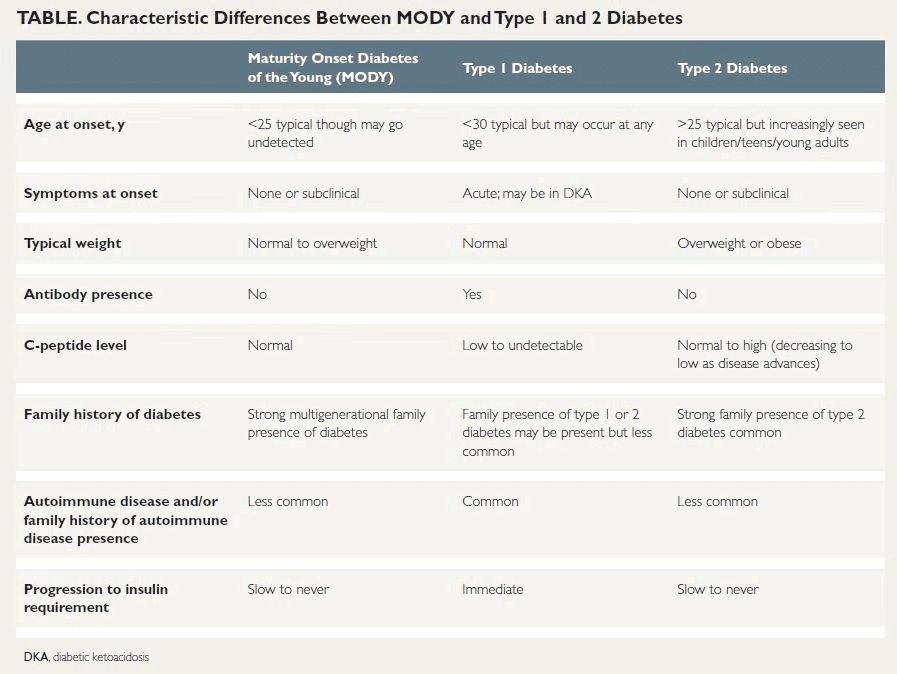 Why in News?
Why in News?
- Recent research conducted by the Madras Diabetes Research Foundation (MDRF) in collaboration with Washington University School of Medicine has identified a new subtype of Maturity-Onset Diabetes of the Young (MODY). This discovery emphasizes the critical role of genetic testing in the management of diabetes.
Key Takeaways
- MODY is a rare, inherited form of diabetes typically diagnosed in adolescents and young adults.
- The newly identified MODY subtype involves Loss of Function (LOF) mutations in the ABCC8 gene.
- This new subtype leads to early-life hypoglycemia followed by later-onset diabetes.
- Conventional treatments for other MODY forms, such as sulphonylureas, are ineffective for this subtype.
Additional Details
- MODY: Maturity-onset diabetes of the young is characterized by a decrease in insulin production due to mutations in a single gene, typically appearing before the age of 30.
- The genetic basis of the new subtype highlights the necessity for genetic testing, as many individuals with MODY remain misdiagnosed.
- This discovery urges the integration of genetic screening into routine diabetes care to enhance diagnosis and treatment strategies.
- Further research is essential to find effective treatments targeted at the specific genetic mechanisms involved in this new subtype.
The identification of this new MODY subtype underscores the complexity of diabetes and the need for a broader understanding of its various forms, which extend beyond the commonly known types 1 and 2.
Harop Drones
 Why in News?
Why in News?
- On May 10, 2025, India successfully deployed Israeli-made Harop drones in military operations, particularly during Operation Sindoor. This deployment highlights advancements in unmanned combat capabilities and signifies a shift in modern military strategies.
Key Takeaways
- Harop drones are a type of loitering munition that combines features of unmanned aerial vehicles and missiles.
- These drones can autonomously identify and strike high-value targets, especially effective against radar and air defense systems.
Additional Details
- What Are Harop Drones? Harop drones are classified as loitering munitions, capable of remaining airborne for extended periods while autonomously identifying and engaging targets.
- Operational Capabilities: Harop drones can loiter over a target for up to nine hours, utilizing an electro-optic sensor to plan attack routes and strike from various angles. Their design offers immunity to communication jamming, enhancing combat effectiveness.
- Historical Context: The concept of loitering munitions dates back to the introduction of the HARPY by Israel Aerospace Industries in the 1980s. The HAROP drone represents a modern evolution with advanced targeting systems.
- Strategic Importance: The deployment of Harop drones enhances India's precision strike capabilities, allowing for rapid responses in diverse terrains.
- Recent Engagements: During Operation Sindoor, India targeted multiple air defense systems in Pakistan, including strikes on defense installations in Lahore, as a response to a terrorist attack in Jammu and Kashmir.
- Future Implications: The effective use of Harop drones is likely to influence future military engagements, reshaping combat strategies as nations invest in advanced unmanned systems.
The deployment of Harop drones not only marks a significant enhancement in India's military capabilities but also indicates a broader evolution in the landscape of modern warfare.
Bhutan Launches World’s First Crypto Tourism Payment System
 Why in News?
Why in News?
- On May 10, 2025, Bhutan introduced an innovative national-level cryptocurrency tourism payment system in collaboration with Binance Pay and DK Bank. This groundbreaking initiative enables travelers to utilize digital currencies for various services during their visit to Bhutan, significantly enhancing their overall tourism experience and promoting financial inclusion within the country.
Key Takeaways
- Launch of the world's first national cryptocurrency tourism payment system.
- Partnership with Binance Pay and DK Bank to facilitate transactions.
- Support for over 100 cryptocurrencies, including BNB, BTC, and USDC.
- Real-time payments through dynamic or static QR codes.
- Empowerment of local businesses by enabling cryptocurrency payments.
Additional Details
- Crypto Payment System: This new system integrates seamlessly into the Binance app, allowing tourists to make secure transactions using QR codes, thus avoiding traditional currency conversion issues and reducing transaction fees.
- The initiative is expected to significantly benefit local artisans and vendors, providing them with access to a broader customer base without the need for card terminals.
- Role of DK Bank: As Bhutan's first fully digital bank, DK Bank plays a crucial role in this initiative, aiming to enhance access to financial services across the nation while supporting sustainable development goals.
- Tourists can experience a cashless and card-free environment, simplifying travel logistics and enhancing interactions with local culture.
This pioneering initiative not only positions Bhutan at the forefront of technological innovation in tourism but also sets a precedent for other countries considering similar advancements in their tourism sectors. By integrating technology with public services, Bhutan is ushering in a new era of inclusive and efficient travel.
Government’s Pre-emption Rights on Oil and Gas
 Why in News?
Why in News?
- The Government of India has introduced draft regulations under a revised oilfields legislation, granting it pre-emption rights over oil and natural gas in times of national emergencies. This legislation aims to protect national interests and ensure public welfare in critical situations.
Key Takeaways
- The government can claim oil and natural gas resources during national emergencies.
- The pre-emption rights are part of the Oilfields (Regulation and Development) Amendment Bill.
- The bill aims to modernize outdated provisions from the 1948 Act.
Additional Details
- Pre-emption Rights: These are legal entitlements that allow a party to purchase or claim resources before others. In this context, the government can prioritize national needs during emergencies.
- Definition of National Emergency: Although not explicitly defined in the draft rules, scenarios such as war or natural disasters are anticipated to be included. The government has the authority to determine what constitutes an emergency.
- Fair Market Price Mechanism: When exercising pre-emption rights, the government will pay producers a fair market price based on current market conditions to ensure fairness.
- Force Majeure Conditions: The draft includes provisions that exempt oil and gas operators from obligations during uncontrollable events like natural disasters or wars.
- Implications for the Industry: The introduction of these rights may lead to increased government control over the oil and gas sector, requiring industry stakeholders to adapt to ensure compliance.
- Public Welfare Considerations: The primary objective of these rules is to safeguard public welfare by ensuring access to essential resources during emergencies, reflecting a commitment to national security and economic stability.
In summary, the introduction of pre-emption rights over oil and gas resources signifies a strategic move by the government to prioritize national interests during emergencies, potentially reshaping the operational landscape of the oil and gas industry in India.
The State of Global Nursing Workforce in 2025
 Why in News?
Why in News?
- The 2025 edition of the “State of the World’s Nursing” report by the WHO highlights the pivotal role of nurses in achieving the Sustainable Development Goals (SDGs). As the largest group of healthcare professionals, nurses are critical in addressing health disparities globally. The report provides extensive data on nursing education, practice, and remuneration, emphasizing the necessity of investing in nursing to bolster health systems worldwide.
Key Takeaways
- The global nursing workforce grew from 27.9 million in 2018 to 29.8 million in 2023.
- Approximately 78% of nurses are situated in countries representing only 49% of the global population.
Additional Details
- Challenges in Low- and Middle-Income Countries: These nations are producing more nursing graduates than high-income countries, yet they face significant challenges in job creation due to faster population growth. Enhanced domestic investments are essential for improving working conditions and creating nursing positions.
- Foreign-Born Nurses: Globally, one in seven nurses is foreign-born, with 23% residing in high-income countries. This heavy reliance on international migration raises sustainability concerns for nursing workforces.
- Gender Dynamics: Women account for 85% of the nursing workforce, highlighting the need for policies that promote gender equality and empower female nurses.
- Mental Health Support: Only 42% of countries offer mental health support for nursing staff, which is critical for retaining skilled professionals and ensuring quality patient care.
- Policy Recommendations: The report outlines 12 policy priorities and additional recommendations aimed at strengthening the nursing profession, emphasizing the need for action from policymakers and stakeholders.
- Reporting Improvements: Data collection has improved, with a 33% increase in reporting since 2020, enhancing the understanding of global nursing challenges.
In summary, the WHO report underscores the importance of addressing the challenges faced by the nursing workforce globally. It calls for immediate action to invest in nursing, essential for achieving universal health coverage and meeting health-related SDGs.
EOS-09 Earth Observation Satellite

Why in News?
- India is preparing to strengthen its surveillance capabilities with the upcoming launch of the EOS-09 satellite, scheduled for May 18, 2025. The launch will take place from the Sriharikota spaceport using the Polar Satellite Launch Vehicle (PSLV). A delegation of lawmakers is expected to attend, highlighting the increasing significance of space technology in governance.
Key Takeaways
- The EOS-09 satellite, also known as RISAT-1B, weighs around 1,710 kg.
- It features a C-band synthetic aperture radar, enabling high-resolution imaging in various weather conditions.
- The satellite will operate in a sun-synchronous orbit, providing consistent lighting for imaging.
- It has applications in national security, agriculture, and disaster management.
Additional Details
- Satellite Specifications: EOS-09 is equipped with advanced radar technology that functions effectively in clouds, rain, and at night, making it superior to traditional optical cameras.
- Applications: The satellite will enhance border monitoring, agricultural assessments, and real-time disaster management by providing vital data during emergencies such as floods.
- Technological Advancements: It features five operational modes for varying imaging needs, capable of detecting objects as small as one meter, crucial for border security.
- Complementing Existing Satellites: EOS-09 will integrate with other satellites like Resourcesat and Cartosat, bolstering India’s overall monitoring capabilities.
- Significance of the Launch Event: The involvement of Members of Parliament underscores the importance of satellite data in shaping policy and managing resources effectively.
The launch of EOS-09 marks a pivotal advancement in India's space technology efforts, promising to expand its capabilities in surveillance and monitoring across various sectors. This initiative reflects India's commitment to utilizing space technology for the betterment of society.
New Ribbon Worm Species
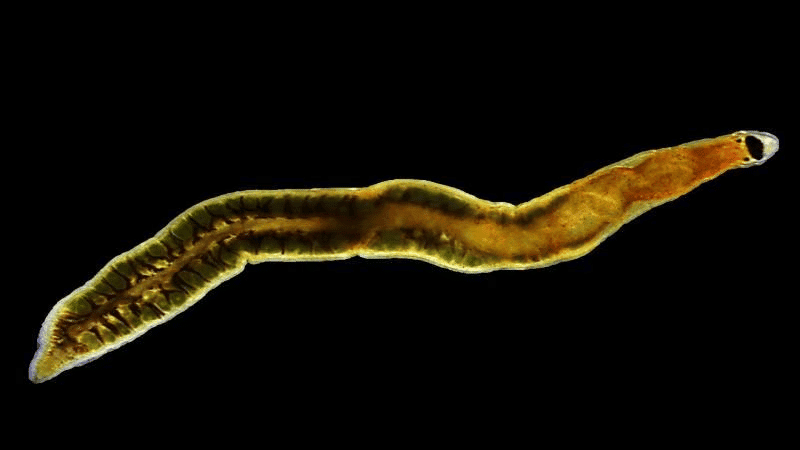 Why in News?
Why in News?
- On May 14, 2025, scientists announced the discovery of a new species of ribbon worm, named Pararosa vigarae, off the coast of Galicia, Spain. This remarkable species, commonly referred to as the accordion worm, possesses the unique ability to contract its body into ring-like folds, resembling an accordion. The identification of this species was confirmed through a combination of morphological traits and molecular genetic analysis, contributing to advancements in our understanding of marine biodiversity.
Key Takeaways
- The species Pararosa vigarae belongs to the phylum Nemertea.
- It can compress its body to one-fifth of its normal length, featuring visible annular constrictions.
- This discovery highlights the need for further research in under-explored marine zones.
Additional Details
- Characteristics of Pararosa vigarae: This worm was found in the subtidal zone of the Ría de Arosa estuary at depths of approximately 30 meters. Its distinctive morphology includes varying numbers of rings based on the worm's size.
- Advances in Taxonomy: Historically, ribbon worms have been difficult to classify due to their lack of distinctive external features. Modern molecular techniques like DNA sequencing have revolutionized species identification, allowing for more accurate classifications.
- Importance of Marine Biodiversity: The discovery emphasizes the critical need to understand marine biodiversity, especially in light of environmental changes. Currently, there are about 1,350 documented ribbon worm species, with many more likely undiscovered.
- Methodological Innovations: The identification process combined traditional fieldwork with modern techniques, such as high-resolution imaging and genetic analysis, underscoring the importance of collaboration between marine scientists and local communities.
- Implications for Conservation: Discoveries like Pararosa vigarae are essential for ongoing conservation efforts, particularly in addressing the biodiversity crisis and understanding marine ecosystem resilience amidst climate change.
The identification of Pararosa vigarae not only enhances our understanding of marine life but also underscores the urgency of preserving marine ecosystems as we continue to face environmental challenges.
Afrikaners Arrive in the United States as Refugees
 Why in News?
Why in News?
- On May 14, 2025, a group of Afrikaners arrived in the United States seeking refuge. This move was facilitated by the Trump administration, which expedited their citizenship applications due to ongoing tensions in South Africa related to land expropriation policies. Their arrival has ignited discussions about their refugee status and the implications for U.S.-South Africa relations.
Key Takeaways
- Afrikaners are white South Africans, descendants of 17th-century Dutch settlers.
- The Trump administration's actions stemmed from concerns over South Africa's land expropriation law.
- Claims of systemic violence against Afrikaners have emerged, prompting debate over their refugee claims.
- The U.S. government has suspended aid to South Africa following the executive order supporting Afrikaners.
Additional Details
- Afrikaners: They make up about 7% of South Africa's population and primarily speak Afrikaans. Notably, they own approximately 70% of the country's agricultural land.
- Land Expropriation Law: Enacted in South Africa, this law allows the government to seize land without compensation, which has been labeled by critics as a human rights violation.
- Allegations of genocide against Afrikaners have been backed by some conservative figures, including Elon Musk, raising concerns over racial injustices faced by white farmers.
- The strained U.S.-South Africa relations are further complicated by South Africa's foreign policy, particularly its relations with countries like Russia and Iran.
- The suspension of USAID funding has significant implications for health initiatives in South Africa, especially programs aimed at combating HIV/AIDS.
This situation highlights the complexities of international relations and the humanitarian implications of domestic policies in South Africa, alongside the impact of U.S. foreign policy decisions.
|
164 videos|632 docs|1150 tests
|
FAQs on Weekly Current Affairs (8th to 14th May 2025) - General Test Preparation for CUET UG - CUET Commerce
| 1. What is Article 51 of the UN Charter and its significance? |  |
| 2. What are the key features of the hydroelectric projects on the Chenab River? |  |
| 3. What is the Indo-Pacific Logistics Network Initiative and its objectives? |  |
| 4. What is the significance of INS Arnala being delivered to the Indian Navy? |  |
| 5. How does the new subtype of maturity-onset diabetes differ from traditional diabetes types? |  |





















